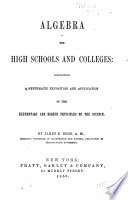 | James B. Dodd - Algebra - 1859 - 368 pages
...a, factor with this exponent may therefore he canceled. For example, a2 -Ha2 gives the quotient o°, by subtracting the exponent of the divisor from that of the dividend. But any quantity contains itself once, and therefore o2 -=-a2 also gives the quotient 1 ; and these... | |
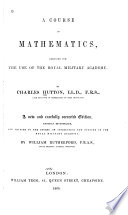 | Charles Hutton - Mathematics - 1860 - 1020 pages
...in both divisor and dividend, and suppress the greatest factor common to the two coefficients. 17. Powers of the same quantity are divided by subtracting...exponent of the divisor from that of the dividend, and writing the remainder as tltf exponent of the quotient. Thus a' = aaaaaaa; a4 = aaaa a' aaaaaaa... | |
 | Thomas Sherwin - 1862 - 252 pages
...a^ 6*". Hence, 2 a* 6* . 7 a* $ = 2 a$ b^ . 7 a*6^ = 14 a^ 5«*. 5. Divide nfi by m^. This is done by subtracting the exponent of the divisor from that of the dividend. Thus, — = m* * = 6. Divide 6 m z by 2 m z. In this case we reduce the exponents of the same letter... | |
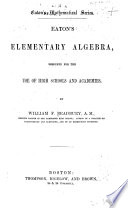 | William Frothingham Bradbury - Algebra - 1868 - 270 pages
...-^- a2 = a3 For as X a" = a5. (Art. 50.) Hence, Powers of the same quantity are divided by each other by subtracting the exponent of the divisor from that of the dividend. (3.) (4.) 27a;2y2 48a*xy - = 3xy - = — Say 9 xy — 16 ax (5.) (6.) — 276 3? y — 16a2x*yz -•... | |
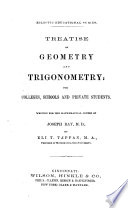 | Eli Todd Tappan - Geometry - 1868 - 444 pages
...the following rules for multiplication and division by logarithms : To divide, subtract the logarithm of the divisor from that of the dividend. The remainder is the logarithm of the quotient. For example, to find the product of 2, .000314, and 89.235. log. 2 = .301030,... | |
 | Lorenzo Fairbanks - 1875 - 472 pages
...adding their exponents. Thus, 71 x T = 7'. A power may be divided by another power of the same root, by subtracting the exponent of the divisor from that of the dividend. Thus, 13* -t- 13" = 13. A fraction may be raised to any power, by raising each of its terms to that... | |
 | William Frothingham Bradbury - Algebra - 1877 - 302 pages
...= a 3 For a 3 X a 2 = a 5 - (Art. 50.) Hence, Powers of the same quantity are divided by each other by subtracting the exponent of the divisor from that of the dividend. (3.) (4.) 27 3?f- 48a 2 xy 9 xy — 16 ax =3xy = — 3ay (5.) (6.) — 276 a^y — 16a 2 a: 2 y3 -... | |
 | Shelton Palmer Sanford - Algebra - 1879 - 348 pages
...dividend. EXAMPLES. 1. Divide a5 by or2. 1 a2 Analysis, a5 -f- a~2 = a5 -t- — ; = a5 x — = as. a2 1 By subtracting the exponent of the divisor from that of the dividend, we obtain the same result. Aw. a«. 2. Divide x* by x'2. Ans. x'. 3. Divide a~5 by a-2. Ans. o~2. 4.... | |
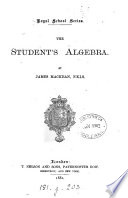 | James Mackean - 1881 - 510 pages
...powers of the same quantity is obtained by adding the fractional exponents together, and the quotient by subtracting the exponent of the divisor from that of the dividend, as in the case of integral indices (Art. 50). Illustrative Examples. (1.) Multiply аШх$ by аШх$.... | |
 | Simon Newcomb - Algebra - 1882 - 302 pages
...Hence by the preceding rule a* -i- of = aa = a?. Here 2, the exponent in the quotient, is obtained by subtracting the exponent of the divisor from that of the dividend. Hence RULE. Tfie exponent of any symbol in the divisor is to be subtracted from the exponent of the... | |
| |